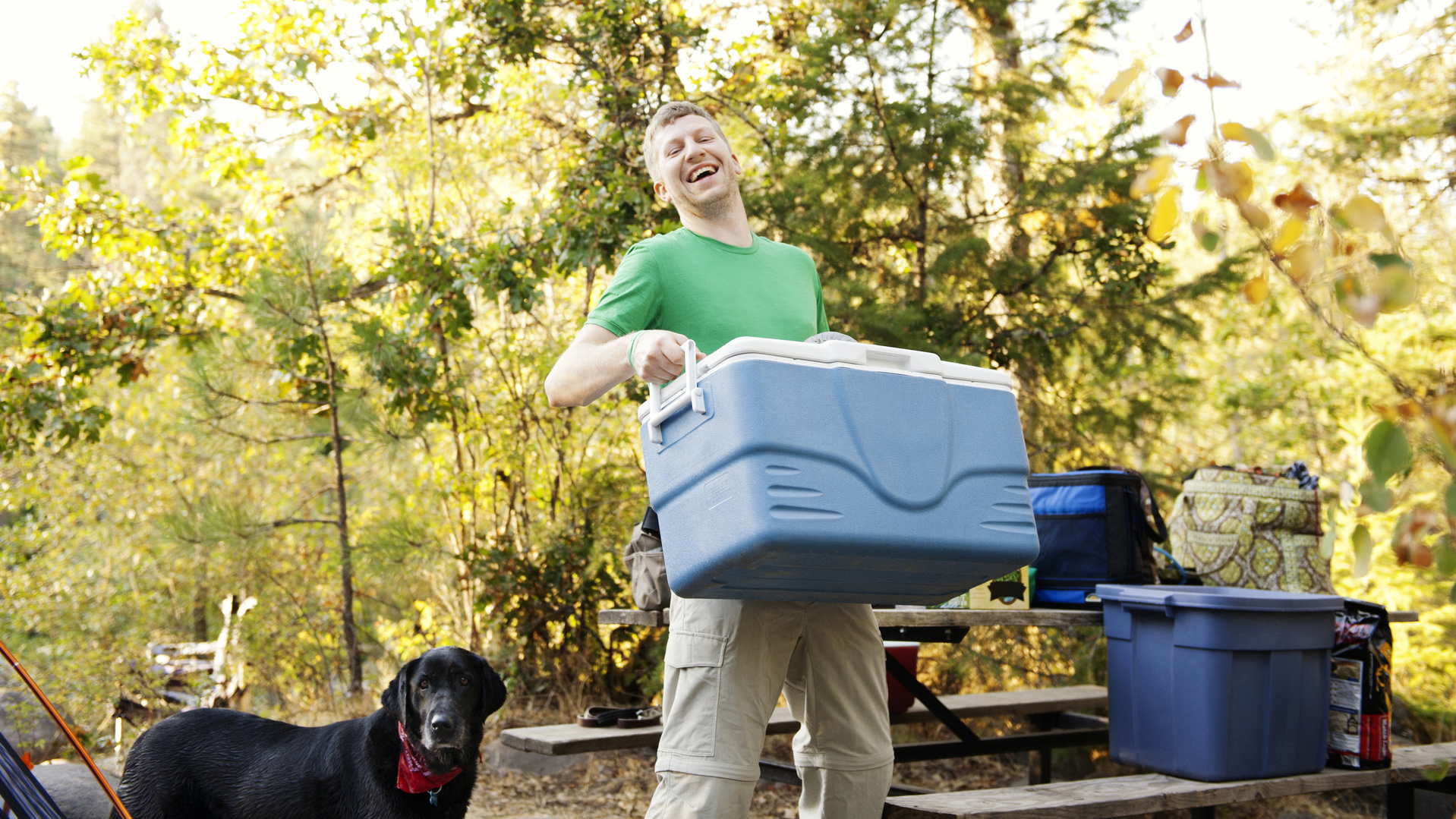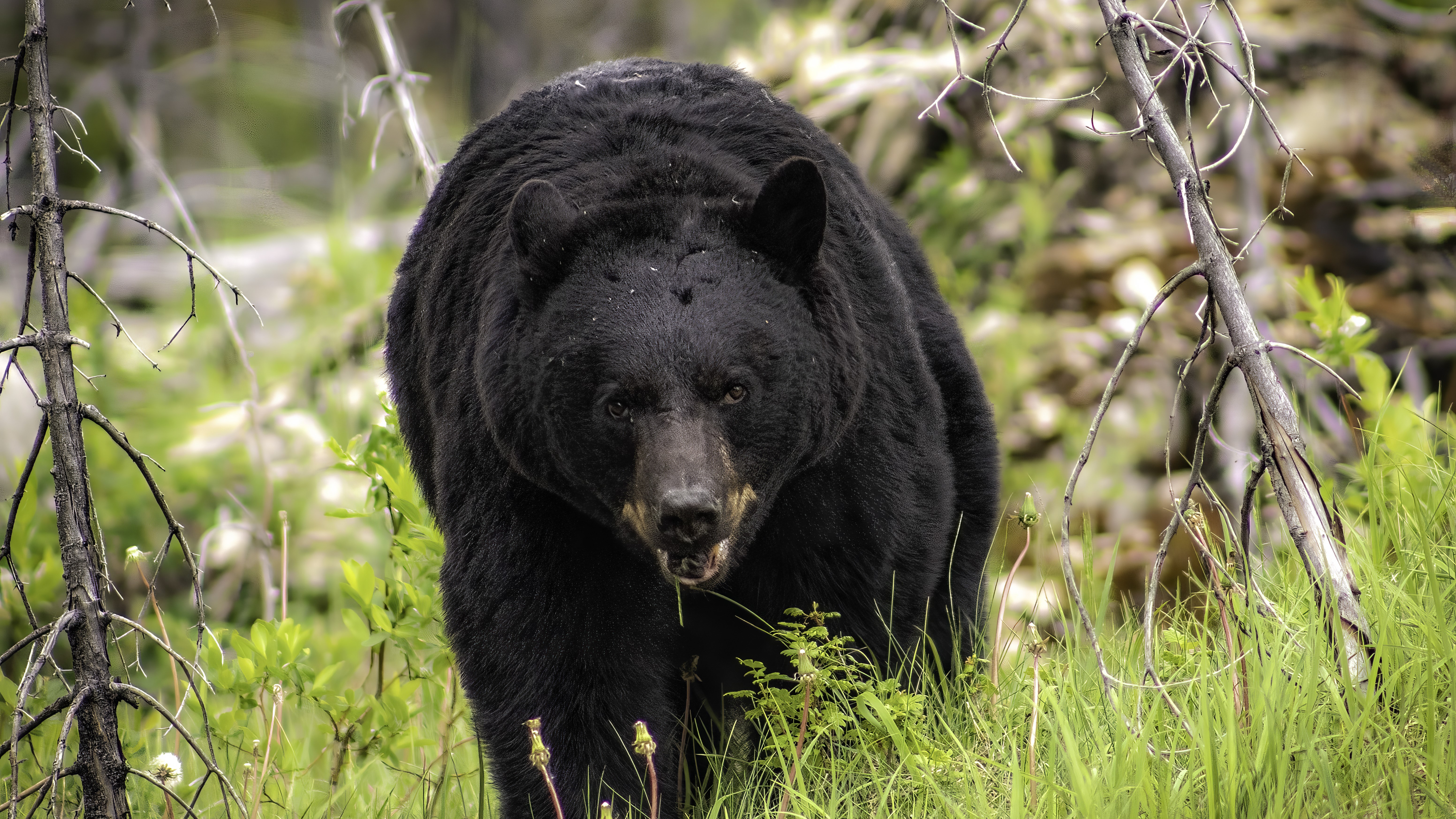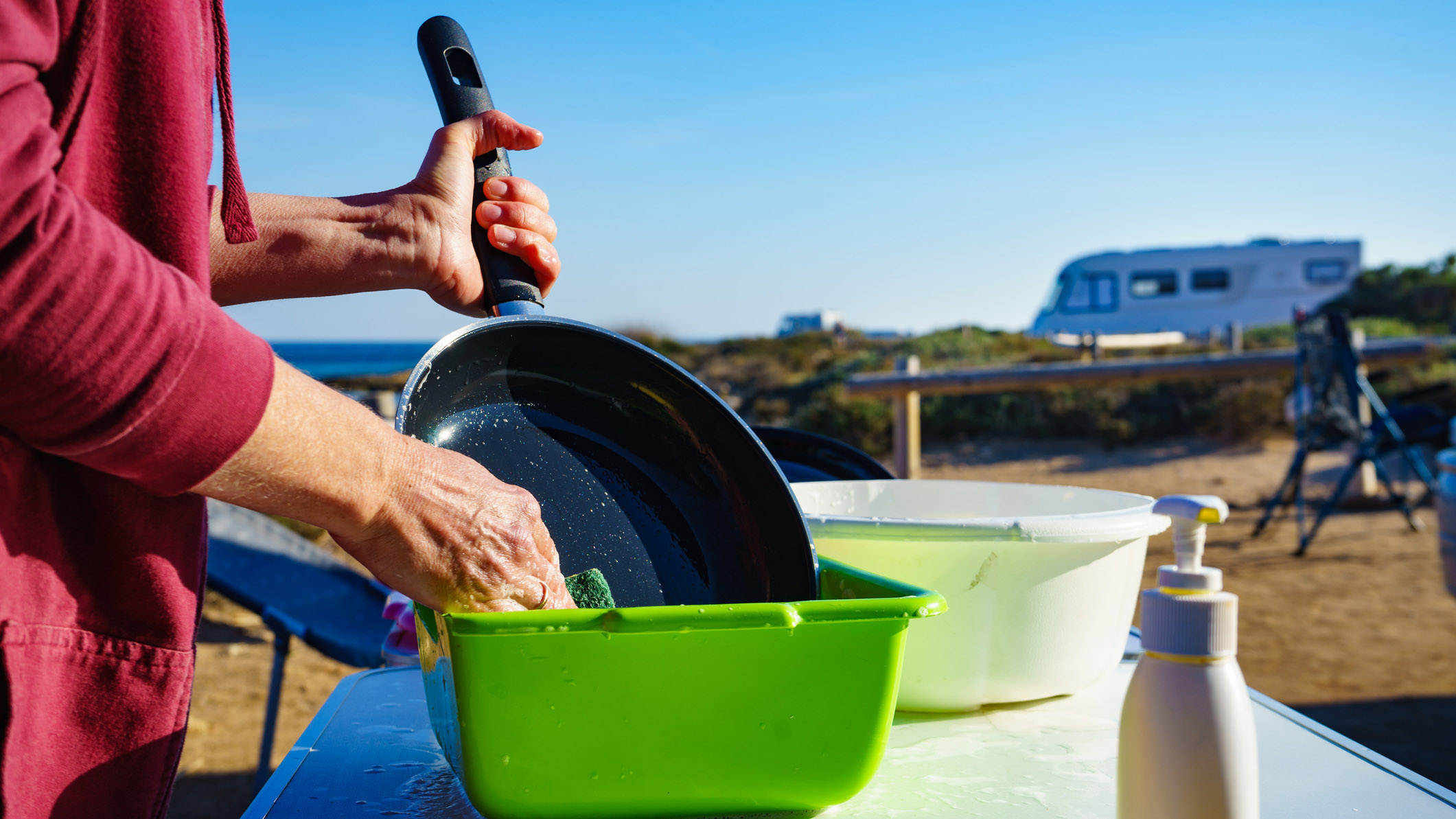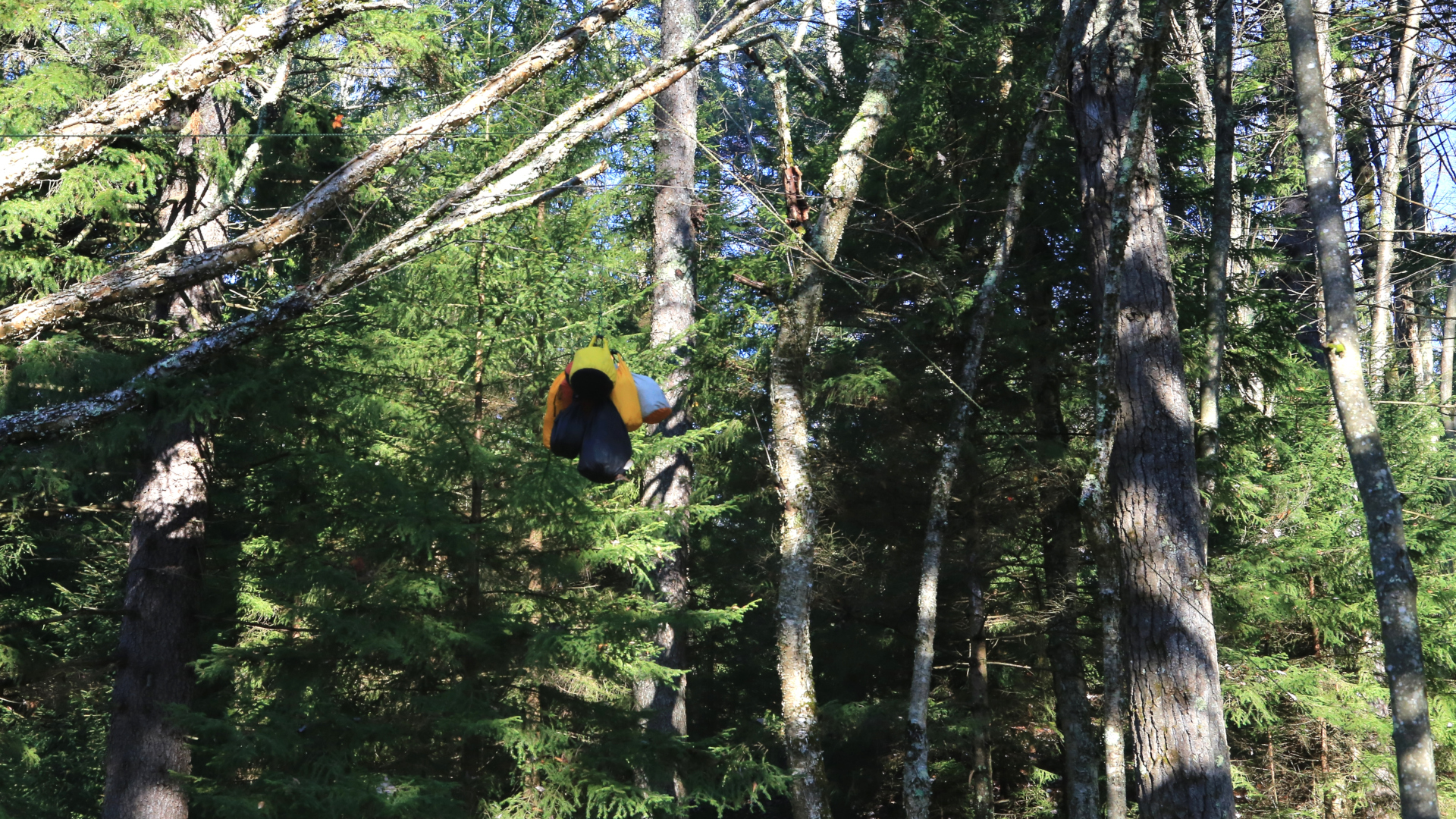How to store food when camping: simple hacks to keep your nosh fresh
Our expert guide on how to store food when camping will keep your grub fresher for longer, keep it away from critters and stop it from attracting unwanted guests

Knowing how to store food when camping will go a long way towards ensuring your trip is a successful one. A clean, well organized camp is a happy camp and few things in life are as wonderful as a beautifully cooked feast by a backcountry lake as the sun sets after a long day spent exploring.
Neglect to store your food properly, however, and it'll lose its freshness, making for a less tasty experience at meal times. Knowing how to keep your food cold while camping is just one element of storing your food as, worse still, the scent of the produce may attract unwanted guests into your basecamp, from flies and ants to more troublesome guests like raccoons and bears.
If you, like us, believe that the slogan “sharing is caring” has its limits, learning how to store food when camping is an important skill set – and can require a little more knowhow than packing everything away in your best camping cooler. Wildlife sightings are always fun, of course, but become less so when segueing into the destruction of your best tents and/or the pilfering of your precious edibles.
Below, we'll show you how to keep those edibles safe with short, straight-talking guide on how to store food when camping.
Meet the expert

An expert in all things outdoor recreation, Lou has been studying and using backcountry gear for over 20 years. He's someone who's learnt through experience, sharpening his camp craft with each trip.
Today's best deals
Check regulations
- Many areas require you to carry hard-sided bear-proof containers
- This is because bears will habitually return to campsites they've had previous success in

Before you leave for that long-planned, epic backcountry backpacking adventure, make sure you understand the local rules and regulations. Many national forests, state parks and wilderness areas now require backpackers to use hard-sided bear-proof containers to carry and store food.
The regulations are in place to prevent backcountry encounters between bears, both black and grizzly, and humans. Bears can become habituated to campsites and return frequently expecting to find leftover food or easy access to food bags or unsecured coolers. Paying careful attention to how you pack and store food, therefore, will help to keep both you and the park’s wildlife safe. When you follow the rules, you also make your campsite safer for the next people visiting that park.
If you are heading into bear country, it’s also a good idea to learn what to do if you meet a bear in the wilderness and how to use bear spray.
All the latest inspiration, tips and guides to help you plan your next Advnture!
Keep camp clean
- The best way to keep your food safe and secure is to run a clean and tidy campsite
- This is because unwanted visitors are attracted to the smells of food
- Keep all food and toiletry items in sealed, air-tight containers

The best way to keep your food safe and secure is to keep your campsite as clean as possible. Bears and other, smaller animals are attracted to the smells of cooking, fresh food and enticing scents like sunscreen, toothpaste, deodorants, soap and even empty food packaging or containers. Packing these items in airtight containers or double-bagging them in zip-lock pouches will help to stifle their scent and, hopefully, keep the big guys at bay. Reading up on how to clean camping cookware is also advised.
Also be sure to keep food and other scented items out of your tent at night or when you are away from camp. An encounter with a bear is a memory most campers would prefer to avoid, but small varmints like mice, squirrels, chipmunks and raccoons can be equally destructive. Their sharp teeth and claws can rip stuff sacks, shred food packaging, and tear even the best hiking backpack.
When you set-up camp, look for a site that offers a convenient location away from your tent pad for cooking, cleaning fish and washing dishes after eating. Store your food in bear canisters or hang food bags in trees at least 100 feet from your campsite. If an animal can’t see your food or can’t follow the scent to your campsite or tent, they will keep moving in search of something to eat.
If you are car camping, the most effective way to store food is in your vehicle’s trunk at night – just be sure to take coolers out during the day when temperatures rise.
Hang your food
- For decades, hanging food high up in a tree was a common method
- Using ropes to hang sealed stuff sacks allows you to keep your food high up off the ground

For decades, the most common method of storing food at camp was packing everything into a stuff sack and using ropes to hang the bag from a tree branch. Well-meaning advice from dozens of experts provided tips on the gear required (usually 50-100 feet of cord, a few carabiners and a throw bag to get the rope over the branch) and the process of getting the ropes rigged around tree branches to suspend the food bag.
Most suggested hanging food bags on branches at least 12 feet high, 6 feet away from the tree trunk and 6 feet from the ground, though in practice the measurements will vary depending on the size of the trees available near your campsite.
Or... don't hang your food
- A growing consensus goes against hanging food
- Rangers point out that intelligent bears will return to areas where food has been previously hung
- Bears, or their cubs, can often climb high enough to reach these packages
- Current advice is to use hard-sided, bear-proof containers

There is, however, a growing consensus that hanging food is not the safest way to store food in the backcountry. The disadvantages include limited availability of appropriate trees, complicated rigging processes, and stuff bags that can be too heavy to hang properly. Experienced rangers and wilderness wildlife experts also point out that bears are smart and will return to trees that are frequently used to hang food. Bears can also climb and reach for suspended bags, and their sharp teeth and claws can snap ropes and drop the food bags to the ground. Mother bears have even been known to send cubs to climb out onto slender branches to bend them lower.
The current consensus is to replace hanging food systems with rigid bear-proof containers. These airtight containers seal in the scent of their contents, so are far less likely to attract bears. If they are discovered, their rugged lids and impact-resistant materials keep the food inside secure.
A journalist specializing in outdoor recreation, Lou has covered product design innovations, participation trends and environmentally sustainable manufacturing for over 20 years. On the other hand, he’s had some less than successful outdoor adventures: once, completely spent after a hard day on the trail, he managed to set a vintage MSR Whisperlite stove ablaze before accidentally kicking the burning contraption into a lake. A published author, his book about invasive fish threatening the Great Lakes watershed will be published in 2021. craftedwords.com
